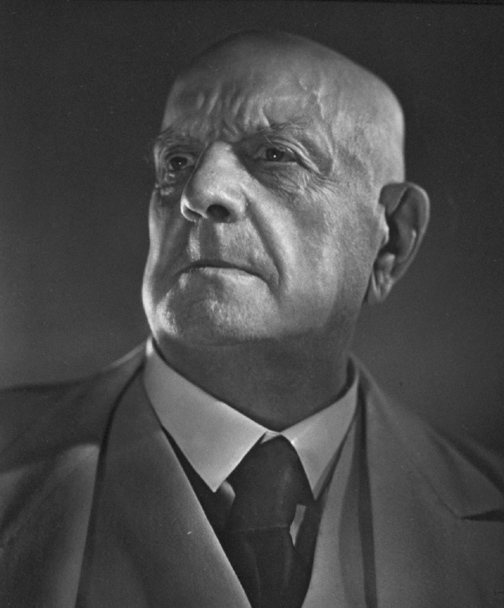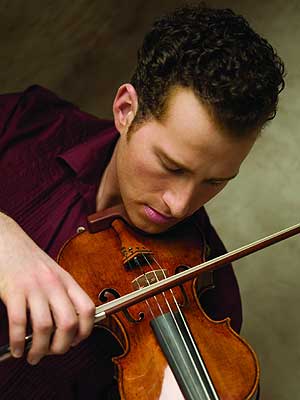Sibelius 5, Beethoven 2 in Vänskä’s CSO program with Znaider

In an age of internationalization, it’s almost become musicologically incorrect to ascribe an affinity and inherent aptitude to musicians when they perform repertoire from their homeland.
To be sure, there have been several non- Finnish conductors who have proven first-rate interpreters of Jean Sibelius’ music—Leopold Stokowski, Serge Koussevitzky, and Sir Colin Davis among them.
Yet, Osmo Vänskä, who returned to the Chicago Symphony Orchestra podium Thursday night in a substantially Sibelius program, does indeed seem to possess a certain natural empathy for the music of his nation’s greatest composer. As in his Sibelius recordings, the Finnish conductor favors a lightness and transparency that eschews overblown rhetoric for a sense of the pastoral outdoors, the Northern wind and a rustic folk quality.
Sibelius originally wrote his Rakastava for male chorus, but revised it several times, and the last version for string orchestra and percussion was heard Thursday night. The tripartite Rakastava (or The Lover) can veer close to some of the composer’s pay-for-play salon music, but Vänskä revealed the richness and ingenuity of this miniature. It was striking how “stringy” this recasting is, for a work originally composed for choir.
With refined playing by the CSO strings, Vänskä conveyed the light piquancy of the central section and the sense of subdued tragedy moving into a quiet glowing eloquence at the coda, Robert Chen’s pearly violin solo keeping the schmaltz at bay.
Vänskä earned acclaim with a revelatory set of the Sibelius symphonies on the Bis label and his performance of the majestic Symphony No. 5 offered a similar bracing, revisionist take.

Of his later symphonies the Fifth is a more outwardly expressive work, still imbued with the lyrical introspection and fizzing energy of its predecessors, but with a more openly heroic profile. That quality is exemplified in the majestic horn theme of the finale; as the music slows down and the volume and crescendo rise ever higher, the finale is capped with six famous, widely spaced chords, arguably the most emphatic coda in the entire symphonic literature.
What was striking about Vänskä’s Fifth was the vernal freshness and delicacy of so much of the performance, in music that is often treated as a flat-out Romantic showstopper. The austere Northern chill was there in the opening bars as well as the elemental power but without rhetoric or heaviness.
The Andante is often over-sugared into Romantic treacle, but in Vänskä’s hands, became more of a springy interlude. Perhaps at times, one wanted a bit more sonorous heft, but Vänskä’s preference for a leaner, more tensile brilliance sacrificed nothing in the finale, with a cumulative buildup to those climactic chords, hammered home with firm impact by the CSO brass.
Nikolaj Znaider provided the Germanic meat between the two Sibelius works, with the evening’s centerpiece, Beethoven’s Violin Concerto. Even in an era of plenty where first-rate fiddlers are concerned, Znaider stands tall—literally and figuratively—-among today’s leading string soloists. The strapping Dane possesses an immaculate technique with a gleaming, acutely focused tone and brings a compelling sense of controlled spontaneity to his performances.
With Vänskä an equally assured Beethoven hand, one expected great things from this collaboration. Yet despite much beautiful playing by Znaider, Thursday’s performance came as something of a disappointment.

Znaider seemed to want to indulge in a bit of his own revisionism, recasting Beethoven’s epic concerto as a more intimate, Mozartean work, often winnowing his tone down to a barely audible golden thread. Yet besides, shearing off the Teutonic heaviness, Znaider didn’t seem clear about offering a coherent alternative. The soloist’s repeated slowing down to muse spaciously felt more mannered than organic, and too often sacrificed momentum. Znaider’s trim, lightly bowed playing and lingering offered some lovely moments, but seemed to miniaturize both the scale and drama of the music.
The final Rondo came off best with Vänskä eliciting fiery tuttis and Znaider bringing a more straightforward approach with the right joyful abandon and rhythmic lift. But this mixed Beethovenian bag felt decidedly like an interpretive work in progress.
The program will be repeated 8 p.m. Friday and Saturday. 312-294-3000; www.cso.org
Posted in Performances




